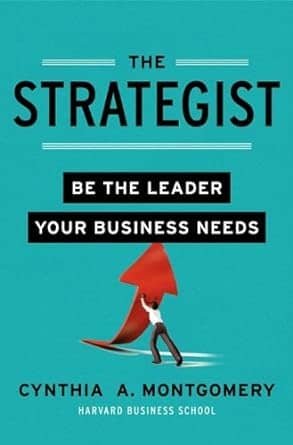|
|
Hey friends! I had a great time in Sydney this past week, and by the time you’re reading this I’ll be back home recovering from jet lag. I’ll also be taking next week off work; my first week of vacation this calendar year. Woohoo! In Sydney I experienced barefoot lawn bowling, celebrated my ninth work anniversary by eating “the world’s most Instagrammed cake,” and went out on the Sydney harbor on a sailboat. I also had the most impactful volunteering event of the past decade by volunteering at Our Big Kitchen cooking meals for the homeless with no recipe. Our task was to take a “surprise ingredient,” combine it with other ingredients from their pantry, and cook a meal to feed 50 homeless people. The kitchen added an intriguing competition element by letting us know that they would judge all meals and crown the group who made the best tasting meal. The competition element, I presume, helps ensure people give it their best shot. Our team made a ratatouille-inspired meal and won the competition! While that was nice, the real meaning came from the impact we had on the people we were helping. How a delicious meal paired with the ability to choose provided agency and dignity to people in need. It inspired me to find more opportunities to give back once I’m home. A Quote Three Things1 – 🧒 Shifting Behaviors of Teenagers – I’ve heard anecdotes of behavior change, but hadn’t seen a large study. It’s very clear that the experiences of teenagers are changing. It’s difficult for me to imagine why teenagers aren’t as interested in getting a driver’s license – I was really looking forward to it at 16!
2 – 🦠 Exoplanet with Signs of Biological Life – The Webb telescope, investigating exoplanet K2-18b, found evidence of dimethyl sulfide (DMS). On Earth this substance is only produced by life. That, combined with this planet being in the habitable zone and the potential of a water-based ocean, makes for an exciting discovery. 3 – 🤖 Lex Friedman Metaverse Podcast with Zuck – I can’t speak to the content of the podcast because I haven’t listened to the full thing, but I found the technology behind the interaction fascinating. As a remote worker I’m intrigued by the technological advances that will bring some of the old in-person benefits to remote work. Deeper DiveImposter syndrome. Insecurity. Fear. There are numerous descriptors for what it feels like when there’s a lack of confidence, just as there are myriad experiences in life where we feel those feelings. Think about the classic fear of public speaking, sometimes reported as more fear-causing for people than death! How often have you heard a response to someone’s fear of speaking along the lines of “Be confident!” or “You’ve got this!” While mindset is a choice, and there is a positive impact that comes from positive self-talk, this is a fragile solution. Worse than fragile, it’s also an ineffective approach if you specifically want high confidence to equate to high performance. You can’t self-talk your way into the Olympics! The more sustainable approach to achieving confidence is through competence. And competence through practice. Or, as shared in Do Hard Things by Steve Magness: Lasting self-esteem doesn’t come from being told that we are great. It comes from doing the actual work and making real connections.
As an aside, this does mean that there’s no shortcut to the end goal. Confidence through competence, and competence through practice, represent the long way ‘round, as most durable endeavors are. The good news is that you can unlock a virtuous cycle. One where attempting to do things that scare you helps you build relevant skills. Those skills enable you to improve. That improvement increases confidence. This article by Kevin Eikenberry addresses this well. Once you start doing things with confidence that used to scare you, your confidence increases. And once you try, you build skills. When you notice your skills improving, you get more confident. More confidence in your skills makes it easier to improve them even more.
To illustrate by example, let’s use the fear of public speaking. If you can get over your fear enough to go to Toastmasters, you’ll get practice, feedback, and develop speaking skills. These skills make you more comfortable getting practice speaking at work. The more you practice, get feedback, and develop skills – the more your public speaking confidence grows. That confidence was generated through competence via practice. When it comes to practice, there are two critical elements; you must actually do the thing, and you must reflect on the experience. Why is the first element, doing a thing, so important? There’s a potential clue in something called myelin sheaths, these insulating layers of fat surrounding the nerves in your brain. As you do a thing, the electrical signal travels these nerve paths. The firing of this circuit triggers the creation of more myelin sheaths around the conduit, making it easier to fire again. The more you do a thing, the easier that thing becomes to do. The firing of the circuit is paramount. Myelin is not built to respond to fond wishes or vague ideas or information that washes over us like a warm bath. The mechanism is built to respond to actions: the literal electrical impulses traveling down nerve fibers. It responds to urgent repetition.
– Daniel Coyle, The Talent Code
Why is the second element, reflecting on the experience, so important? It creates the closed loop that allows for learning and adjustment. Reflecting enables you to make adjustments and tweaks before the next attempt at something. If there’s no reflection, there’s no improvement. To do anything well requires knowing what it is that you’re doing, and you can only know what you’re really doing by making the process conscious—reflecting on yourself, reflecting on the task, and coming to a resolution.
– Warren Bennis, On Becoming a Leader
A real-life embodiment of these practices comes from Jiro Ono, from Jiro Dreams of Sushi. Jiro is the owner of a small 10-seat restaurant in Tokyo. He has been practicing his sushi craft for decades. Watch the documentary (trailer link) and listen to how he talks about preparing rice! He has immense amounts of competence. He has immense confidence. This newsletter is my own small example of applying this principle. The nature of my role at work over the last several years pulled me further and further away from written content and more into meetings and speaking. The lack of practice in writing decreased my confidence. This newsletter gives me an outlet for the practice. The practice, paired with feedback and reflection, will increase my competence – and my confidence. That confidence will reduce my fear and open me up to more opportunities. The competence will help me make the most of those opportunities. So now we know how to build confidence! Lean into the fear, physically practice to build up those myelin sheaths, and reflect on your experience. That will give you the competence you need to embody the confidence. Is there any area of your life where you want more confidence? Reflect on the skills and practice you need to take to improve your competence in that area. Take a concrete and tangible step this week in that direction.
|



No responses yet